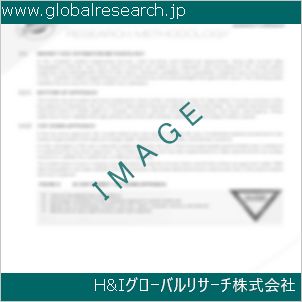1 Lightweight Wind Sensor Market Overview
1.1 Product Definition
1.2 Lightweight Wind Sensor Segment by Type
1.2.1 Global Lightweight Wind Sensor Market Value Growth Rate Analysis by Type 2022 VS 2029
1.2.2 Ultrasonic Type
1.2.3 Mechanical Type
1.3 Lightweight Wind Sensor Segment by Application
1.3.1 Global Lightweight Wind Sensor Market Value Growth Rate Analysis by Application: 2022 VS 2029
1.3.2 Marine
1.3.3 Agricultural
1.3.4 Aviation
1.3.5 Others
1.4 Global Market Growth Prospects
1.4.1 Global Lightweight Wind Sensor Production Value Estimates and Forecasts (2018-2029)
1.4.2 Global Lightweight Wind Sensor Production Capacity Estimates and Forecasts (2018-2029)
1.4.3 Global Lightweight Wind Sensor Production Estimates and Forecasts (2018-2029)
1.4.4 Global Lightweight Wind Sensor Market Average Price Estimates and Forecasts (2018-2029)
1.5 Assumptions and Limitations
2 Market Competition by Manufacturers
2.1 Global Lightweight Wind Sensor Production Market Share by Manufacturers (2018-2023)
2.2 Global Lightweight Wind Sensor Production Value Market Share by Manufacturers (2018-2023)
2.3 Global Key Players of Lightweight Wind Sensor, Industry Ranking, 2021 VS 2022 VS 2023
2.4 Global Lightweight Wind Sensor Market Share by Company Type (Tier 1, Tier 2 and Tier 3)
2.5 Global Lightweight Wind Sensor Average Price by Manufacturers (2018-2023)
2.6 Global Key Manufacturers of Lightweight Wind Sensor, Manufacturing Base Distribution and Headquarters
2.7 Global Key Manufacturers of Lightweight Wind Sensor, Product Offered and Application
2.8 Global Key Manufacturers of Lightweight Wind Sensor, Date of Enter into This Industry
2.9 Lightweight Wind Sensor Market Competitive Situation and Trends
2.9.1 Lightweight Wind Sensor Market Concentration Rate
2.9.2 Global 5 and 10 Largest Lightweight Wind Sensor Players Market Share by Revenue
2.10 Mergers & Acquisitions, Expansion
3 Lightweight Wind Sensor Production by Region
3.1 Global Lightweight Wind Sensor Production Value Estimates and Forecasts by Region: 2018 VS 2022 VS 2029
3.2 Global Lightweight Wind Sensor Production Value by Region (2018-2029)
3.2.1 Global Lightweight Wind Sensor Production Value Market Share by Region (2018-2023)
3.2.2 Global Forecasted Production Value of Lightweight Wind Sensor by Region (2024-2029)
3.3 Global Lightweight Wind Sensor Production Estimates and Forecasts by Region: 2018 VS 2022 VS 2029
3.4 Global Lightweight Wind Sensor Production by Region (2018-2029)
3.4.1 Global Lightweight Wind Sensor Production Market Share by Region (2018-2023)
3.4.2 Global Forecasted Production of Lightweight Wind Sensor by Region (2024-2029)
3.5 Global Lightweight Wind Sensor Market Price Analysis by Region (2018-2023)
3.6 Global Lightweight Wind Sensor Production and Value, Year-over-Year Growth
3.6.1 North America Lightweight Wind Sensor Production Value Estimates and Forecasts (2018-2029)
3.6.2 Europe Lightweight Wind Sensor Production Value Estimates and Forecasts (2018-2029)
3.6.3 China Lightweight Wind Sensor Production Value Estimates and Forecasts (2018-2029)
3.6.4 Japan Lightweight Wind Sensor Production Value Estimates and Forecasts (2018-2029)
3.6.5 South Korea Lightweight Wind Sensor Production Value Estimates and Forecasts (2018-2029)
4 Lightweight Wind Sensor Consumption by Region
4.1 Global Lightweight Wind Sensor Consumption Estimates and Forecasts by Region: 2018 VS 2022 VS 2029
4.2 Global Lightweight Wind Sensor Consumption by Region (2018-2029)
4.2.1 Global Lightweight Wind Sensor Consumption by Region (2018-2023)
4.2.2 Global Lightweight Wind Sensor Forecasted Consumption by Region (2024-2029)
4.3 North America
4.3.1 North America Lightweight Wind Sensor Consumption Growth Rate by Country: 2018 VS 2022 VS 2029
4.3.2 North America Lightweight Wind Sensor Consumption by Country (2018-2029)
4.3.3 U.S.
4.3.4 Canada
4.4 Europe
4.4.1 Europe Lightweight Wind Sensor Consumption Growth Rate by Country: 2018 VS 2022 VS 2029
4.4.2 Europe Lightweight Wind Sensor Consumption by Country (2018-2029)
4.4.3 Germany
4.4.4 France
4.4.5 U.K.
4.4.6 Italy
4.4.7 Russia
4.5 Asia Pacific
4.5.1 Asia Pacific Lightweight Wind Sensor Consumption Growth Rate by Region: 2018 VS 2022 VS 2029
4.5.2 Asia Pacific Lightweight Wind Sensor Consumption by Region (2018-2029)
4.5.3 China
4.5.4 Japan
4.5.5 South Korea
4.5.6 China Taiwan
4.5.7 Southeast Asia
4.5.8 India
4.6 Latin America, Middle East & Africa
4.6.1 Latin America, Middle East & Africa Lightweight Wind Sensor Consumption Growth Rate by Country: 2018 VS 2022 VS 2029
4.6.2 Latin America, Middle East & Africa Lightweight Wind Sensor Consumption by Country (2018-2029)
4.6.3 Mexico
4.6.4 Brazil
4.6.5 Turkey
5 Segment by Type
5.1 Global Lightweight Wind Sensor Production by Type (2018-2029)
5.1.1 Global Lightweight Wind Sensor Production by Type (2018-2023)
5.1.2 Global Lightweight Wind Sensor Production by Type (2024-2029)
5.1.3 Global Lightweight Wind Sensor Production Market Share by Type (2018-2029)
5.2 Global Lightweight Wind Sensor Production Value by Type (2018-2029)
5.2.1 Global Lightweight Wind Sensor Production Value by Type (2018-2023)
5.2.2 Global Lightweight Wind Sensor Production Value by Type (2024-2029)
5.2.3 Global Lightweight Wind Sensor Production Value Market Share by Type (2018-2029)
5.3 Global Lightweight Wind Sensor Price by Type (2018-2029)
6 Segment by Application
6.1 Global Lightweight Wind Sensor Production by Application (2018-2029)
6.1.1 Global Lightweight Wind Sensor Production by Application (2018-2023)
6.1.2 Global Lightweight Wind Sensor Production by Application (2024-2029)
6.1.3 Global Lightweight Wind Sensor Production Market Share by Application (2018-2029)
6.2 Global Lightweight Wind Sensor Production Value by Application (2018-2029)
6.2.1 Global Lightweight Wind Sensor Production Value by Application (2018-2023)
6.2.2 Global Lightweight Wind Sensor Production Value by Application (2024-2029)
6.2.3 Global Lightweight Wind Sensor Production Value Market Share by Application (2018-2029)
6.3 Global Lightweight Wind Sensor Price by Application (2018-2029)
7 Key Companies Profiled
7.1 FT Technologies
7.1.1 FT Technologies Lightweight Wind Sensor Corporation Information
7.1.2 FT Technologies Lightweight Wind Sensor Product Portfolio
7.1.3 FT Technologies Lightweight Wind Sensor Production, Value, Price and Gross Margin (2018-2023)
7.1.4 FT Technologies Main Business and Markets Served
7.1.5 FT Technologies Recent Developments/Updates
7.2 Anemoment
7.2.1 Anemoment Lightweight Wind Sensor Corporation Information
7.2.2 Anemoment Lightweight Wind Sensor Product Portfolio
7.2.3 Anemoment Lightweight Wind Sensor Production, Value, Price and Gross Margin (2018-2023)
7.2.4 Anemoment Main Business and Markets Served
7.2.5 Anemoment Recent Developments/Updates
7.3 LCJ Capteurs
7.3.1 LCJ Capteurs Lightweight Wind Sensor Corporation Information
7.3.2 LCJ Capteurs Lightweight Wind Sensor Product Portfolio
7.3.3 LCJ Capteurs Lightweight Wind Sensor Production, Value, Price and Gross Margin (2018-2023)
7.3.4 LCJ Capteurs Main Business and Markets Served
7.3.5 LCJ Capteurs Recent Developments/Updates
7.4 Gill
7.4.1 Gill Lightweight Wind Sensor Corporation Information
7.4.2 Gill Lightweight Wind Sensor Product Portfolio
7.4.3 Gill Lightweight Wind Sensor Production, Value, Price and Gross Margin (2018-2023)
7.4.4 Gill Main Business and Markets Served
7.4.5 Gill Recent Developments/Updates
7.5 Renke
7.5.1 Renke Lightweight Wind Sensor Corporation Information
7.5.2 Renke Lightweight Wind Sensor Product Portfolio
7.5.3 Renke Lightweight Wind Sensor Production, Value, Price and Gross Margin (2018-2023)
7.5.4 Renke Main Business and Markets Served
7.5.5 Renke Recent Developments/Updates
7.6 R. M. Young
7.6.1 R. M. Young Lightweight Wind Sensor Corporation Information
7.6.2 R. M. Young Lightweight Wind Sensor Product Portfolio
7.6.3 R. M. Young Lightweight Wind Sensor Production, Value, Price and Gross Margin (2018-2023)
7.6.4 R. M. Young Main Business and Markets Served
7.6.5 R. M. Young Recent Developments/Updates
7.7 Comptus
7.7.1 Comptus Lightweight Wind Sensor Corporation Information
7.7.2 Comptus Lightweight Wind Sensor Product Portfolio
7.7.3 Comptus Lightweight Wind Sensor Production, Value, Price and Gross Margin (2018-2023)
7.7.4 Comptus Main Business and Markets Served
7.7.5 Comptus Recent Developments/Updates
7.8 Belfort Instrument
7.8.1 Belfort Instrument Lightweight Wind Sensor Corporation Information
7.8.2 Belfort Instrument Lightweight Wind Sensor Product Portfolio
7.8.3 Belfort Instrument Lightweight Wind Sensor Production, Value, Price and Gross Margin (2018-2023)
7.8.4 Belfort Instrument Main Business and Markets Served
7.7.5 Belfort Instrument Recent Developments/Updates
7.9 Texas Electronics
7.9.1 Texas Electronics Lightweight Wind Sensor Corporation Information
7.9.2 Texas Electronics Lightweight Wind Sensor Product Portfolio
7.9.3 Texas Electronics Lightweight Wind Sensor Production, Value, Price and Gross Margin (2018-2023)
7.9.4 Texas Electronics Main Business and Markets Served
7.9.5 Texas Electronics Recent Developments/Updates
7.10 Rika Electronic Tech
7.10.1 Rika Electronic Tech Lightweight Wind Sensor Corporation Information
7.10.2 Rika Electronic Tech Lightweight Wind Sensor Product Portfolio
7.10.3 Rika Electronic Tech Lightweight Wind Sensor Production, Value, Price and Gross Margin (2018-2023)
7.10.4 Rika Electronic Tech Main Business and Markets Served
7.10.5 Rika Electronic Tech Recent Developments/Updates
7.11 Nielsen-Kellerman
7.11.1 Nielsen-Kellerman Lightweight Wind Sensor Corporation Information
7.11.2 Nielsen-Kellerman Lightweight Wind Sensor Product Portfolio
7.11.3 Nielsen-Kellerman Lightweight Wind Sensor Production, Value, Price and Gross Margin (2018-2023)
7.11.4 Nielsen-Kellerman Main Business and Markets Served
7.11.5 Nielsen-Kellerman Recent Developments/Updates
8 Industry Chain and Sales Channels Analysis
8.1 Lightweight Wind Sensor Industry Chain Analysis
8.2 Lightweight Wind Sensor Key Raw Materials
8.2.1 Key Raw Materials
8.2.2 Raw Materials Key Suppliers
8.3 Lightweight Wind Sensor Production Mode & Process
8.4 Lightweight Wind Sensor Sales and Marketing
8.4.1 Lightweight Wind Sensor Sales Channels
8.4.2 Lightweight Wind Sensor Distributors
8.5 Lightweight Wind Sensor Customers
9 Lightweight Wind Sensor Market Dynamics
9.1 Lightweight Wind Sensor Industry Trends
9.2 Lightweight Wind Sensor Market Drivers
9.3 Lightweight Wind Sensor Market Challenges
9.4 Lightweight Wind Sensor Market Restraints
10 Research Finding and Conclusion
11 Methodology and Data Source
11.1 Methodology/Research Approach
11.1.1 Research Programs/Design
11.1.2 Market Size Estimation
11.1.3 Market Breakdown and Data Triangulation
11.2 Data Source
11.2.1 Secondary Sources
11.2.2 Primary Sources
11.3 Author List
11.4 Disclaimer
| ※参考情報 軽量風センサーは、風の速度や方向を測定するためのデバイスであり、特に軽量化された設計が特徴です。このようなセンサーは、さまざまな用途で使用され、特に移動体や小型デバイスでの利用が期待されています。ここでは、軽量風センサーの定義、特徴、種類、用途、関連技術について詳しく説明します。 軽量風センサーの定義は、一般的には風の動きを測定し、その情報をデジタルまたはアナログのデータとして出力するデバイスとされます。これにより、風速や風向きをリアルタイムで把握することが可能になります。軽量であるため、特にドローンや気象観測、環境モニタリングなど、多様なアプリケーションでの使用を容易にします。 次に、軽量風センサーの特徴について述べます。これらのセンサーは、その名の通り軽量でコンパクトなものであり、携帯性が高いため、多くの用途に適しています。また、エネルギー効率にも優れており、バッテリー駆動のデバイスでの運用が容易です。加えて、精度の高い計測が可能で、微小な風の変化にも対応できるようになっています。さらに、耐候性や耐久性にも優れ、さまざまな環境で運用することができます。 軽量風センサーには、いくつかの種類があります。最も一般的なものは、熱線式風速計です。このセンサーは、加熱された細いワイヤーの周囲を風が通過する際の冷却効果を利用して風速を測定します。また、風速と風向きを同時に測定できるアネモメーターもあります。これにより、風の流れをより詳細に把握できるようになります。さらに、超音波風速計も存在し、これは音波を用いて風速を測定する方法です。このようなセンサーは、動的な環境でも高精度な計測が可能です。 用途に関して、軽量風センサーは多岐にわたります。例えば、ドローンやロボット等の自律移動体に搭載することで、周囲の風環境をリアルタイムで把握し、安定した飛行や移動を実現することができます。さらに、気象観測においても活用され、微小気象の研究や風の影響を受ける農作物の監視などにも用いられています。環境モニタリングの分野では、風のデータを取り入れることで大気の質や汚染物質の拡散を監視することが可能になります。これにより、自然環境の保護や災害予測にも貢献できます。 関連技術としては、IoT(Internet of Things)技術の進展があります。軽量風センサーは、IoTデバイスの一部としてネットワークに接続され、リアルタイムでデータを収集、分析することができます。この技術により、複数のセンサーから集めたデータを統合して、より詳細で広範な環境データを提供することが可能になります。さらに、機械学習やビッグデータ解析の技術と組み合わせることで、風のパターンや傾向を予測することも期待されています。 センサーの設計と製造においては、材料技術も重要な要素です。軽量化を実現するためには、新しい材料や製造技術を用いることが求められます。例えば、カーボンファイバーや特殊なプラスチック素材など、高強度かつ軽量な材料が開発されています。また、3Dプリンティング技術を活用することで、複雑な形状を持つセンサーを簡単に製造することが可能となり、個々の用途に最適化したデザインが実現できます。 さらに、ユーザーインターフェースやデータ可視化の技術も重要です。ユーザーが収集した風データを理解しやすくするためには、エクセルシートやグラフなどでデータを表示する方法が一般的です。最近では、スマートフォンアプリやクラウドベースのプラットフォームでデータを管理することが主流となり、ユーザーは手軽に情報を取得し、分析できる環境が整っています。 以上のように、軽量風センサーは風の状態を測定するための重要なツールであり、軽量化の特性によりさまざまな分野での利用が進んでいます。今後、技術革新が進むことで、より高性能で使い勝手の良いセンサーが登場し、ますます多くの分野で役立つことが期待されています。 |
❖ 免責事項 ❖
http://www.globalresearch.jp/disclaimer


-gr.jpg)









